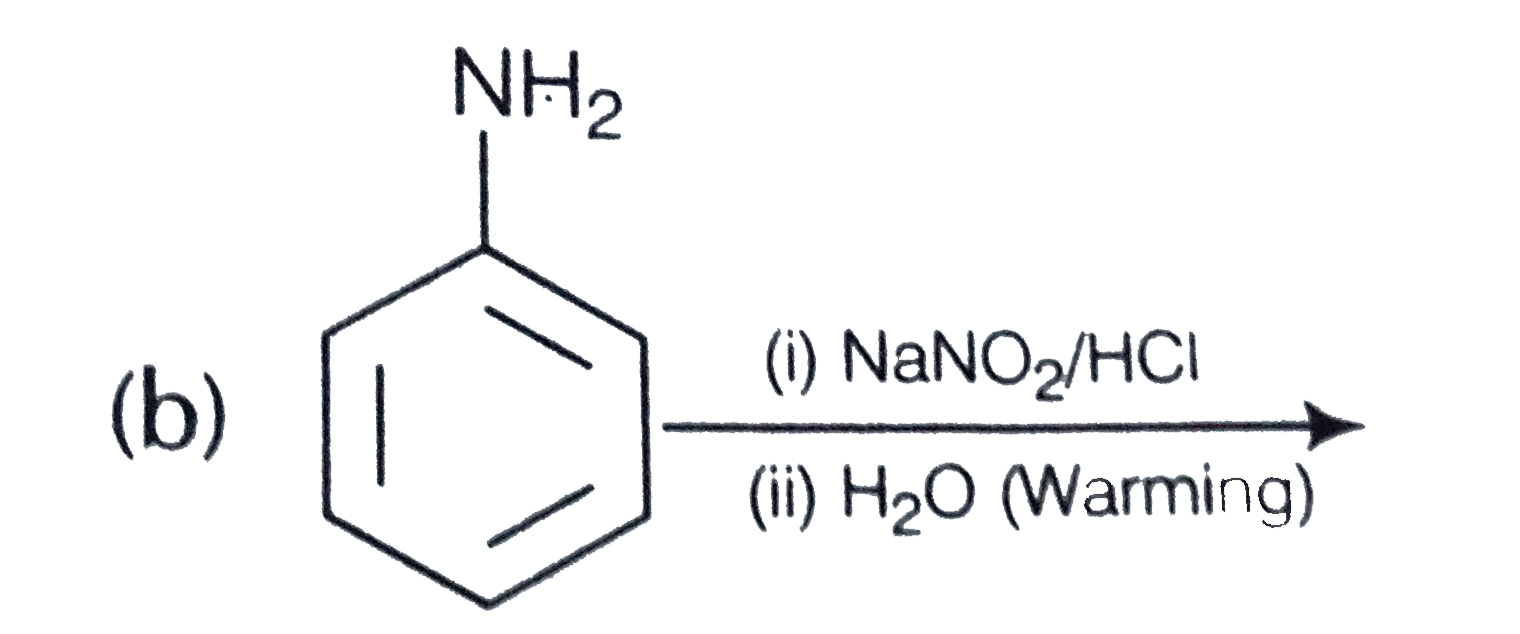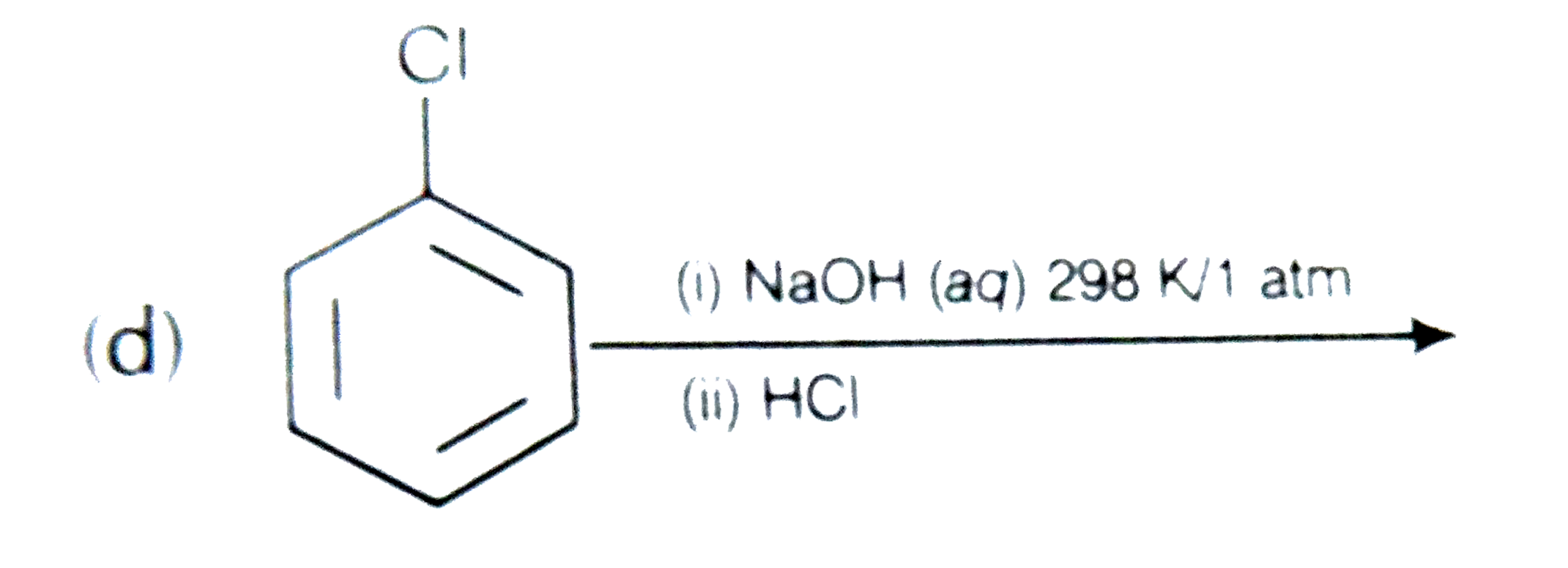In which one of the following reactions, the yield of the products decreases by in creasing the pressure ?
2SO2(g)+O2⇔2SO3(g)
N2(g)+3H2(g)⇔2NH3(g)
PCl5(g)⇔PCl3(g)+Cl2(g)
N2(g)+O2(g)⇔2NO(g)
The correct Answer is:A, C
To solve the question, we need to analyze the given reactions and determine how the yield of products is affected by an increase in pressure. Here's a step-by-step solution:
Step 1: Understand the Effect of Pressure on Equilibrium
According to Le Chatelier's Principle, if the pressure of a system at equilibrium is increased, the equilibrium will shift towards the side with fewer moles of gas. Conversely, if the pressure is decreased, the equilibrium will shift towards the side with more moles of gas.
Step 2: Analyze Each Reaction
We need to look at the number of moles of reactants and products in each reaction to see how the yield of products is affected by increasing pressure.
1. Reaction 1: A + B ⇌ C + D
- Moles of Reactants = 2 (1 A + 1 B)
- Moles of Products = 2 (1 C + 1 D)
- Since the number of moles of reactants equals the number of moles of products, increasing pressure will have no effect on the yield.
2. Reaction 2: A + B + C ⇌ D + E + F
- Moles of Reactants = 3 (1 A + 1 B + 1 C)
- Moles of Products = 3 (1 D + 1 E + 1 F)
- Again, the number of moles of reactants equals the number of moles of products, so increasing pressure will have no effect.
3. Reaction 3: A + B ⇌ C
- Moles of Reactants = 2 (1 A + 1 B)
- Moles of Products = 1 (1 C)
- Here, the number of moles of products is less than the number of moles of reactants. Therefore, increasing pressure will shift the equilibrium to the left, decreasing the yield of products.
4. Reaction 4: A ⇌ B + C
- Moles of Reactants = 1 (1 A)
- Moles of Products = 2 (1 B + 1 C)
- In this case, the number of moles of products is greater than the number of moles of reactants. Increasing pressure will shift the equilibrium to the left, decreasing the yield of products.
Step 3: Conclusion
From the analysis, we find that in Reaction 3, the yield of products decreases by increasing the pressure because the number of moles of products is less than the number of moles of reactants.
Final Answer
The reaction in which the yield of products decreases by increasing the pressure is Reaction 3: A + B ⇌ C.
---
According to Le Chatelier's Principle, if the pressure of a system at equilibrium is increased, the equilibrium will shift towards the side with fewer moles of gas. Conversely, if the pressure is decreased, the equilibrium will shift towards the side with more moles of gas.
We need to look at the number of moles of reactants and products in each reaction to see how the yield of products is affected by increasing pressure.
- Moles of Reactants = 2 (1 A + 1 B)
- Moles of Products = 2 (1 C + 1 D)
- Since the number of moles of reactants equals the number of moles of products, increasing pressure will have no effect on the yield.
- Moles of Reactants = 3 (1 A + 1 B + 1 C)
- Moles of Products = 3 (1 D + 1 E + 1 F)
- Again, the number of moles of reactants equals the number of moles of products, so increasing pressure will have no effect.
- Moles of Reactants = 2 (1 A + 1 B)
- Moles of Products = 1 (1 C)
- Here, the number of moles of products is less than the number of moles of reactants. Therefore, increasing pressure will shift the equilibrium to the left, decreasing the yield of products.
- Moles of Reactants = 1 (1 A)
- Moles of Products = 2 (1 B + 1 C)
- In this case, the number of moles of products is greater than the number of moles of reactants. Increasing pressure will shift the equilibrium to the left, decreasing the yield of products.
From the analysis, we find that in Reaction 3, the yield of products decreases by increasing the pressure because the number of moles of products is less than the number of moles of reactants.
The reaction in which the yield of products decreases by increasing the pressure is Reaction 3: A + B ⇌ C.
Topper's Solved these Questions
- BOOK - PRADEEPCHAPTER - EQUILIBRIUM IN PHYSICAL AND CHEMICAL PROCESSESEXERCISE - TEST YOUR GRIP (II. FILL IN THE BLANKS)16videos
EQUILIBRIUM IN PHYSICAL AND CHEMICAL PROCESSES
- BOOK - PRADEEPCHAPTER - EQUILIBRIUM IN PHYSICAL AND CHEMICAL PROCESSESEXERCISE - CONCEPTUAL QUESTIONS21videos
EQUILIBRIUM IN PHYSICAL AND CHEMICAL PROCESSES
- BOOK - PRADEEPCHAPTER - EQUILIBRIUM IN PHYSICAL AND CHEMICAL PROCESSESEXERCISE - ADVANCED PROBLEMS15videos
EQUILIBRIUM IN PHYSICAL AND CHEMICAL PROCESSES
- BOOK - PRADEEPCHAPTER - EQUILIBRIUMEXERCISE - Competition Focus (VIII. Assertion-Reason Type Questions)16videos
EQUILIBRIUM
- BOOK - PRADEEPCHAPTER - HYDROCARBONSEXERCISE - Competition Focus (JEE(main and advanced)/Medical Entrance) VIII. ASSERTION - REASON TYPE QUESTIONS31videos
HYDROCARBONS
Similar Questions
Knowledge Check
- Question 1 - Select One
In which of the following reaction, the yield of the products does not increase by increase in thepressure?
AN2(g)+O2(g)=2NO(g)B2SO2(g)+O2(g)=2SO3(g)CN2(g)+3H2(g)=2NH3(g)DPCl3(g)+Cl2(g)=PCl5(g) - Question 2 - Select One or More
Which of the following reactions will yield phenol ?
A B
B C
C D
D
- Question 3 - Select One
Which of the following reactions does not yield an ether?
ASodium methoxide reacts with dimethyl sulphateBSodium ethoxide reacts with iodideCSodium ethoxide reacts with tert-butyl chlorideDEthanol reacts with CH2N2 in presence of HBF4
Which of the following reactions will yield phenol?
View SolutionWhich of the following reactions give the poor yield of amine products?
View SolutionWhich of the following reactions will yields phenol ?
View SolutionWhich of the following reactions will not yield phenol ?
View SolutionWhich of the following reaction does not yield acetone ?
View Solution

